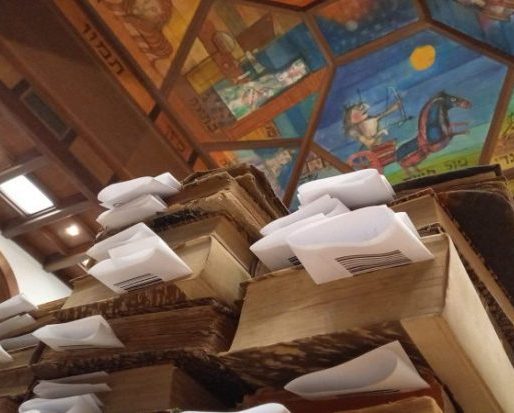ITALYA BOOKS – Jewish Cultural Treasures in Italy’s Libraries

The goal is within reach: cataloging 35,000 volumes of Italian Jewish books printed between the mid-15th century and 1960. Eight years after the project’s conception, Italya Books has digitized and made available online more than thirty thousand volumes, with another five thousand in progress. This latest milestone marks the culmination of a journey that began in 2017 and has been made possible through an international network of collaborations, including the National Central Library of Rome, the National Library of Israel, the Union of the Italian Jewish Communities, and the Foundation for Jewish Cultural Heritage. The project received crucial support from the Rothschild Foundation Hanadiv Europe.
“The idea started in 2017,” said Gloria Arbib, the UCEI representative for Italya Books. “We knew of thousands of collections and holdings of ancient Hebrew books scattered across different libraries, many of which had never been cataloged.”
Most of these collections existed only in paper lists, some of which were a couple of centuries old. There was no online catalogue accessible to the public, which hindered the spread of knowledge and collaboration among scholars.
“That’s precisely why we came up with the idea of creating a single, collective catalogue of Hebrew printed volumes.”
“We started in 2018 with a pilot project of three thousand volumes,” Arbib continued. There were many challenges, such as managing digital images, coordinating the work of photographers and catalogers remotely, and transliterating from Hebrew. The latter turned out to be one of the most difficult obstacles — variants like Avraham or Avram could compromise search results. That’s why, she added, “with the support of experts from the National Library of Israel and the National Central Library of Rome, we developed a unified protocol.” Five catalogers based in Trapani, Rome, Venice, Florence, and Turin are at the heart of the operation.
Arbib emphasized that the results “have been remarkable”. Among the volumes already cataloged are more than 3,300 editions from the 16th century. On average, 44% of the individual collections are classified as rare, with some reaching over 80%. In some cases, it concerns unique copies. In other cases, it concerns copies with at most two other copies in international libraries.
“Thanks to this project,” she added, “the participating libraries are now better equipped to preserve and manage their collections with an up-to-date, professionally curated catalog.”
Both Italian and international scholars of Jewish studies can access the digital archive free of charge. Each volume comes with detailed catalog entries and high-quality images, including ones showing censorship marks or handwritten notes. The platform directs users to the holding library for in-person consultation when necessary. Several researchers have used the resource in recent months to broaden the scope of their investigations. Arbib concluded that the project “has made it possible to return a hidden treasure to collective knowledge.”
